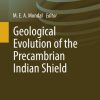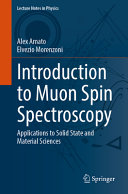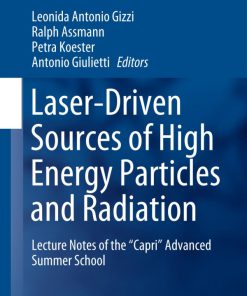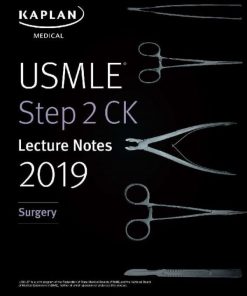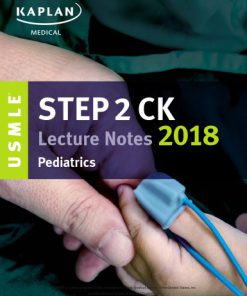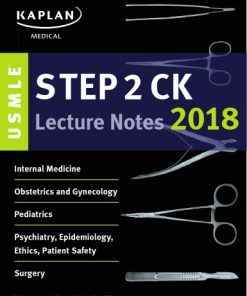Surveys in Theoretical High Energy Physics 2 Lecture Notes from SERC Schools 1st Edition by Raghavan Rangarajan 9811025914 9789811025914
$50.00 Original price was: $50.00.$25.00Current price is: $25.00.
Surveys in Theoretical High Energy Physics 2 Lecture Notes from SERC Schools 1st Edition by Raghavan Rangarajan – Ebook PDF Instant Download/DeliveryISBN: 9811025914, 9789811025914
Full download Surveys in Theoretical High Energy Physics 2 Lecture Notes from SERC Schools 1st Edition after payment.
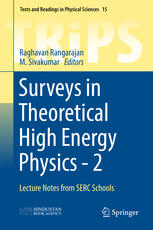
Product details:
ISBN-10 : 9811025914
ISBN-13 : 9789811025914
Author: Raghavan Rangarajan
The book presents pedagogical reviews of important topics on high energy physics to the students and researchers in particle physics. The book also discusses topics on the Quark–Gluon plasma, thermal field theory, perturbative quantum chromodynamics, anomalies and cosmology. Students of particle physics need to be well-equipped with basic understanding of many concepts underlying the standard models of particle physics and cosmology. This is particularly true today when experimental results from colliders, such as large hadron collider (LHC) and relativistic heavy ion collider (RHIC), as well as inferences from cosmological observations, are expected to further expand our understanding of particle physics at high energies. This volume is the second in the Surveys in Theoretical High Energy Physics Series (SThEP). Topics covered in this book are based on lectures delivered at the SERC Schools in Theoretical High Energy Physics at the Physical Research Laboratory, Ahmedabad, andthe University of Hyderabad.
Surveys in Theoretical High Energy Physics 2 Lecture Notes from SERC Schools 1st Table of contents:
1 Quark-Gluon Plasma: An Overview
1.1 Introduction
1.2 QCD
1.2.1 Basic Contents
1.2.2 QED
1.2.3 Non-Abelian Gauge Symmetry: Yang-Mills theory
1.2.4 Symmetries of QCD
1.2.5 Feynman Rules for QCD
1.3 Running Coupling Constant in QCD
1.3.1 Physical Picture
1.3.2 β Function in QFT
1.3.3 Regularization
1.3.4 Scalar Theory
1.3.5 Renormalization Group
1.3.6 β Function
1.3.7 β Function for a Scalar φ4 theory
1.3.8 Running Coupling Constant in QED
1.3.9 Asymptotic Freedom in QCD
1.3.10 Running of αs with Momentum Scale
1.3.11 High Density Behavior
1.4 Field Theory at Finite Temperature
1.4.1 The Partition Function
1.5 Quark Confinement
1.5.1 Potential Models
1.5.2 String Model of Quark Confinement
1.5.3 Bag Models
1.5.4 Transition to the QGP State in the Bag Model
1.6 Relativistic Heavy-Ion Collisions
1.6.1 Rapidity Variable
1.6.2 Pseudorapidity Variable
1.7 Bjorken’s Picture of Relativistic Heavy-Ion Collisions
1.7.1 Estimates of the Central Energy Density
1.7.2 Evolution of QGP
1.8 QGP Signals
1.8.1 Production of Dileptons and Photons in QGP
1.8.2 J/ψ Suppression
1.8.3 Elliptic Flow
1.9 Phase Transitions
1.9.1 First Order Phase Transition
1.9.2 Second Order Phase Transition
1.9.3 Order Parameter
1.9.4 Landau Theory of Phase Transitions
1.9.5 Construction of L
1.9.6 Deconfinement-Confinement Transition
1.9.7 D-C Transition as a Symmetry Breaking Transition
1.9.8 Deconfinement-Confinement Transition with Dynamical Quarks
References
2 An Introduction to Thermal Field Theory
2.1 Introduction
2.2 Green’s Function
2.2.1 The Imaginary Time Green’s Function
2.3 Thermodynamic Potential and Pressure
2.3.1 Non-interacting Case
2.3.2 Interacting Case: Perturbative Method
2.4 φ4 Theory at Finite Temperature
2.4.1 One Loop Mass Correction
2.5 Pressure in φ4 Theory
2.5.1 Infrared Divergence and resummation of ring diagrams
2.6 Appendices
2.6.1 Interaction picture creation and annihilation operators
2.6.2 Ring diagram calculation for zero Matsubara frequency
2.6.3 Problems
References
3 Perturbative Quantum Chromodynamics
3.1 Structure of Hadrons
3.2 Operator Product Expansion and Parton Model
3.3 Gauge Symmetry
3.4 Gauge Fixing
3.5 Regularisation and Renormalisation of YM Theory with nf Fermions
3.6 Asymptotic Freedom
3.7 Wilson Coefficients
3.8 Infrared Safe Observables
3.9 QCD Predictions Beyond Leading Order
References
4 Introduction to Anomalies
4.1 Introduction
4.2 Two Dimensional Gauge Theory
4.3 The Point-Splitting Regularization Method
4.4 The Pauli-Villars Regularization Method
4.5 n-vacua and θ-vacua
4.6 Four Dimensional Gauge Theory
4.7 Path Integral Method
4.7.1 Path Integral Approach to Quantum Mechanics
4.7.2 Path Integral Approach to Quantum Field Theory
4.8 Path Integral Formalism for Anomalies
References
5 Cosmology for Particle Physicists
5.1 Introduction
5.1.1 General Theory of Relativity: A recap
5.1.2 The Standard Model of Cosmology
5.1.3 The Standard Model of Particle Physics
5.2 Friedmann-Robertson-Walker Metrics
5.2.1 Cosmological Redshift
5.2.2 Luminosity Distance
5.3 The Three Laws of Cosmology
5.3.1 Example: Friedmann Universe
5.3.2 Parameters of the Universe
5.4 The Big Bang Universe
5.4.1 Thermodynamic Relations
5.4.2 Isentropic Expansion
5.4.3 Temperature Thresholds
5.4.4 Photon Decoupling and recombination
5.5 Phase Transitions with Quantum Fields in the
5.5 Phase Transitions with Quantum Fields in the Early Universe
5.5.1 Legendre Transform
5.5.2 Effective Action and Effective Potential
5.5.3 Computing Veff
5.5.4 Temperature Corrections to 1-loop
5.6 First Order Phase Transition
5.6.1 Tunneling
5.6.2 Applications
5.7 Inflationary Universe
5.7.1 Fine Tuned Initial Conditions
5.7.2 Horizon Problem
5.7.3 Oldness-Flatness Problem
5.7.4 Density Perturbations
5.7.5 Inflation
5.7.6 Resolution of Problems
5.7.7 Inflaton Dynamics
5.8 Density Perturbations and Galaxy Formation
5.8.1 Jeans Analysis for Adiabatic Perturbations
5.8.2 Jeans Analysis in an Expanding Universe
5.8.3 Density Fluctuations from Inflation
5.9 Relics of the Big Bang
5.9.1 Boltzmann Equation
5.9.2 Dark Matter
5.10 Baryogenesis
5.10.1 Genesis of the Idea of Baryogenesis
5.10.2 Sakharov Criteria
5.10.3 Anomalous Violation of B+L Number
5.10.4 Electroweak Baryogenesis
5.10.5 Baryogenesis from Leptogenesis
5.11 Appendix
References
6 A Collection of Problems on Cosmology
Additional references
Problem set 1: The Friedmann-Robertson-Walker cosmology
Problem set 2: Thermal history of the universe
Problem set 3: Spontaneously broken symmetries and
formation of topological defects [KT]Problem set 4: The inflationary scenario
Problem set 5: Generation of density perturbations [LL,SD]Problem set 6: The cosmic microwave background radiation
People also search for Surveys in Theoretical High Energy Physics 2 Lecture Notes from SERC Schools 1st:
high energy theoretical physicist
high energy physics theory
what is a high energy theoretical physicist
surveys in high energy physics
theoretical high energy
Tags: Surveys, Theoretical High, Energy Physics, SERC Schools, Raghavan Rangarajan
You may also like…
Physics - Solid State Physics
Technique - Materials
Medicine - Pediatrics
USMLE Step 2 CK Lecture Notes 2019: Pediatrics 2019th Edition William G. Cvetnic
Physics - Others



